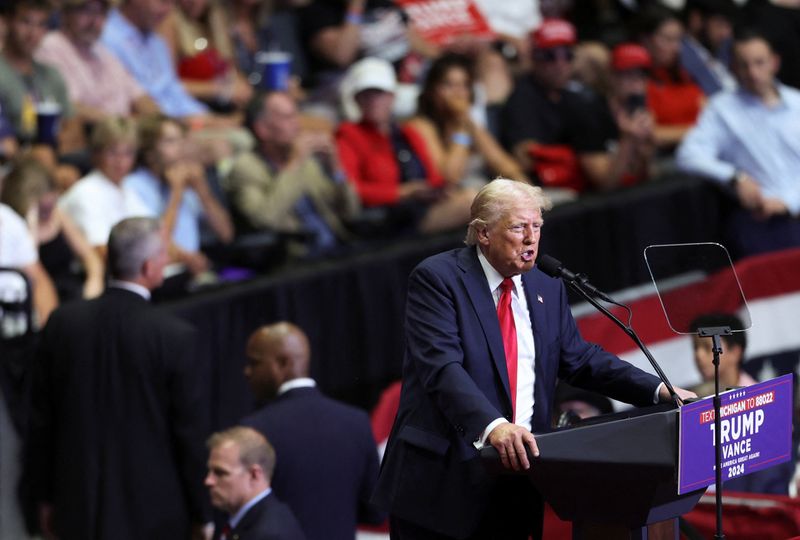Fresh tariffs on imports from China “seem very likely in a second Trump administration,” Goldman Sachs strategists said in a note, citing “clear” authority to impose them and “fairly broad public support.”
“While some categories of goods might face tariff increases of 60pp, we expect that the average tariff increase might be closer to 20pp,” they wrote.
Former President Trump has proposed several tariff increases for his second term, including a 10% universal baseline tariff on all imports, a 60% tariff on imports from China, revoking Permanent Normal Trade Relations (PNTR) with China, and imposing “reciprocal” tariff rates on imports equal to those trading partners impose on U.S. exports of the same product.
He also signaled imposing tariffs on certain autos from Mexico and possibly the EU and using tariff proceeds to cut other taxes.
Goldman Sachs economists believe revoking China's PNTR and imposing “reciprocal” tariff rates are less likely, as both would require congressional approval, and imposing tariffs through executive action could achieve similar goals.
Meanwhile, the 10% universal baseline tariff is seen as a serious proposal with a chance of implementation, though economists do not consider it the most likely scenario in a second Trump administration.
This is because the authority to impose an across-the-board tariff is less clear-cut than targeting a single country or product, and public and Republican lawmaker support is weaker than for China-focused tariffs.
Moreover, the potential for significant negative economic consequences could deter its use. That said, Goldman views this as a "close call," with the possibility of a more "limited version"—such as a lower tariff rate or application to several, but not all, trading partners.
Overall, Trump's proposed tariffs could significantly impact global growth, inflation, and policy, potentially leading to a widespread trade war, strategists caution.
They benchmark the effects of a potential trade war by considering a scenario where the U.S. imposes a 10 percentage point across-the-board tariff on all imports and raises the effective tariff rate on goods from China by nearly 20 percentage points, with full retaliation by other countries. In the U.S., these policies would increase price levels by just over 1% and reduce GDP by slightly more than 0.5%.
Globally, the inflationary impact would generally be smaller outside the U.S., as only U.S. goods imports—which constitute a minor share of final consumption elsewhere—would face retaliatory tariffs.
While dollar appreciation driven by a hawkish Federal Reserve could elevate import prices and inflation in economies with high exposure to USD-denominated trade, slower growth would limit the inflationary effects.
“Taken together, we estimate a 0.5% uplift to global prices, with more upside in Canada, Mexico, and other EMs, and less upside in the Euro area, UK, and other DMs,” strategists said.
They believe the growth slowdown would be more pronounced in other economies than in the U.S., as tariff-driven price increases would reduce real income and spending, while investment would suffer from heightened trade policy uncertainty. They estimate a global GDP decline of -0.9% after considering all these factors.
A tariff-induced inflation rise in the U.S. could keep the Fed on hold in 2025, while non-U.S. central banks might ease policy by over 100 basis points, Goldman's team notes, citing the Taylor rule.
In a more benign scenario where tariffs are limited to China, the effects would be smaller but still detrimental to global GDP.
